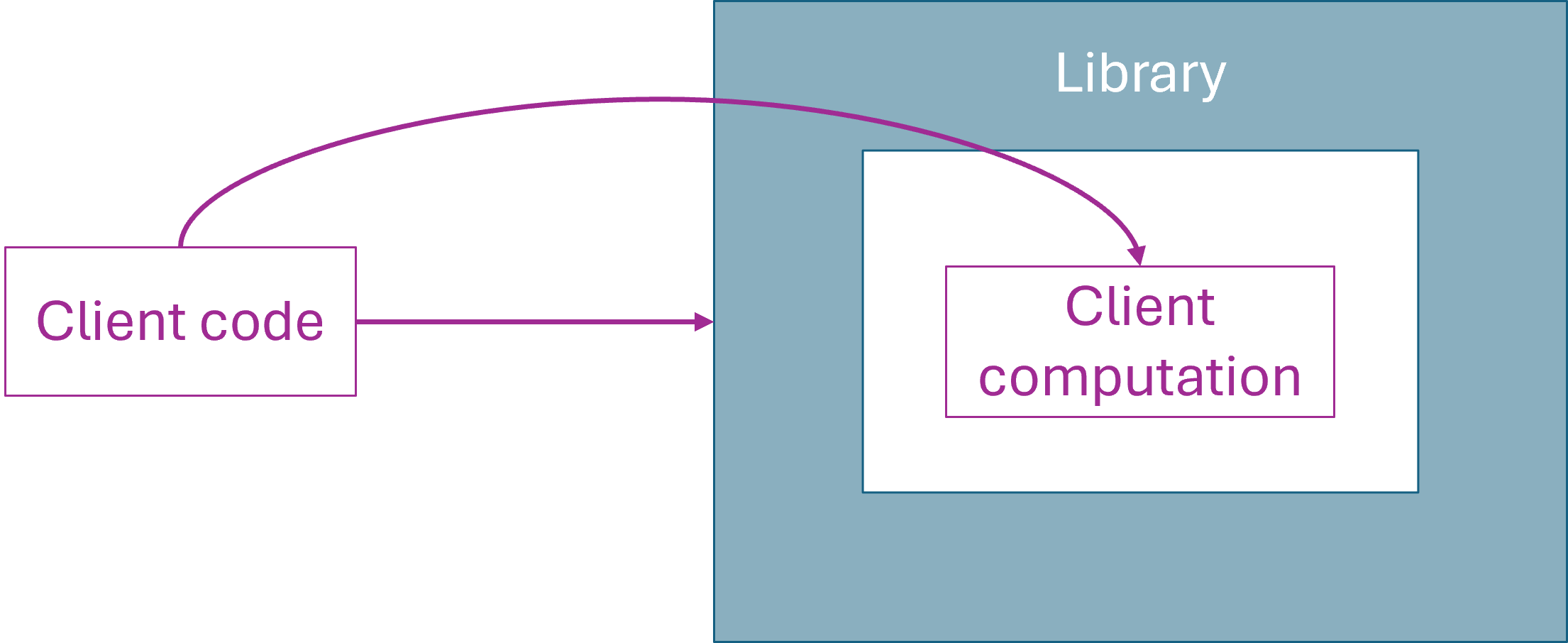Learn Async Programming in TypeScript: Promises, Async/Await, and Callbacks
Async programming is a programming paradigm that allows you to write code that runs asynchronously. In contrast to synchronous programming, which executes code sequentially, async programming allows code to run in the background while the rest of the...

Async programming is a programming paradigm that allows you to write code that runs asynchronously. In contrast to synchronous programming, which executes code sequentially, async programming allows code to run in the background while the rest of the program continues to execute. This is particularly useful for tasks that may take a long time to complete, such as fetching data from a remote API.
Async programming is essential for creating responsive and efficient applications in JavaScript. TypeScript, a superset of JavaScript, makes it even easier to work with async programming.
There are several approaches to async programming in TypeScript, including using promises, async/await, and callbacks. We will cover each of these approaches in detail so that you can choose the best one(s) for your use case.
Table of Contents
Why is Async Programming Important?
Async programming is crucial for building responsive and efficient web applications. It allows tasks to run in the background while the rest of the program continues, keeping the user interface responsive to input. Also, async programming can boost overall performance by letting multiple tasks run at the same time.
There are many real-world examples of async programming, such as accessing user cameras and microphones and handling user input events. Even if you don't frequently create asynchronous functions, it's important to know how to use them correctly to make sure your application is reliable and performs well.
How TypeScript Makes Async Programming Easier
TypeScript offers several features that simplify async programming, including type safety, type inference, type checking, and type annotations.
With type safety, you can ensure your code behaves as expected, even when dealing with asynchronous functions. For instance, TypeScript can catch errors related to null and undefined values at compile time, saving you time and effort in debugging.
TypeScript's type inference and checking also reduce the amount of boilerplate code you need to write, making your code more concise and easier to read.
And TypeScript's type annotations provide clarity and documentation for your code, which is especially helpful when working with asynchronous functions that can be complex to understand.
Now let’s dive in and learn about these three key features of asynchronous programming: promises, async/await, and callbacks.
How to Use Promises in TypeScript
Promises are a powerful tool for handling asynchronous operations in TypeScript. For instance, you might use a promise to fetch data from an external API or to perform a time-consuming task in the background while your main thread keeps running.
To use a Promise, you create a new instance of the Promise class and pass it a function that carries out the asynchronous operation. This function should call the resolve method with the result when the operation succeeds or the reject method with an error if it fails.
Once the Promise is created, you can attach callbacks to it using the then method. These callbacks will be triggered when the Promise is fulfilled, with the resolved value passed as a parameter. If the Promise is rejected, you can attach an error handler using the catch method, which will be called with the reason for the rejection.
Using Promises offers several advantages over traditional callback-based methods. For example, Promises can help prevent "callback hell," a common issue in asynchronous code where nested callbacks become hard to read and maintain.
Promises also make error handling in asynchronous code easier, as you can use the catch method to manage errors that occur anywhere in the Promise chain.
Finally, Promises can simplify your code by providing a consistent, composable way to handle asynchronous operations, regardless of their underlying implementation.
How to Create a Promise
Promise syntax:
const myPromise = new Promise((resolve, reject) => {
// Do some asynchronous operation
// If the operation is successful, call resolve with the result
// If the operation fails, call reject with an error object
});
myPromise
.then((result) => {
// Handle the successful result
})
.catch((error) => {
// Handle the error
});
// Example 1 on how to create a promise
function myAsyncFunction(): Promise<string> {
return new Promise<string>((resolve, reject) => {
// Some asynchronous operation
setTimeout(() => {
// Successful operation resolves promiseCheck out my latest blog post on mastering async programming in TypeScript! Learn how to work with Promises, Async/Await, and Callbacks to write efficient and scalable code. Get ready to take your TypeScript skills to the next level!
const success = true;
if (success) {
// Resolve the promise with the operation result if the operation was successful
resolve(
`The result is success and your operation result is ${operationResult}`
);
} else {
const rejectCode: number = 404;
const rejectMessage: string = `The result is failed and your operation result is ${rejectCode}`;
// Reject the promise with the operation result if the operation failed
reject(new Error(rejectMessage));
}
}, 2000);
});
}
// Use the promise
myAsyncFunction()
.then((result) => {
console.log(result); // output : The result is success and your operation result is 4
})
.catch((error) => {
console.error(error); // output : The result is failed and your operation result is 404
});
In the example above, we have a function called myAsyncFunction() that returns a promise. We use the Promise constructor to create the promise, which takes a callback function with resolve and reject arguments. If the asynchronous operation is successful, we call the resolve function. If it fails, we call the reject function.
The promise object returned by the constructor has a then() method, which takes success and failure callback functions. If the promise resolves successfully, the success callback function is called with the result. If the promise is rejected, the failure callback function is called with an error message.
The promise object also has a catch() method used to handle errors that occur during the promise chain. The catch() method takes a callback function, which is called if any error occurs in the promise chain.
Now, let's move on to how to chain promises in TypeScript.
How to Chain Promises
Chaining promises allows you to perform multiple asynchronous operations in sequence or in parallel. This is helpful when you need to carry out several async tasks one after another or at the same time. For instance, you might need to fetch data asynchronously and then process it asynchronously.
Let's look at an example of how to chain promises:
// Example on how chaining promises works
// First promise
const promise1 = new Promise((resolve, reject) => {
const functionOne: string = "This is the first promise function";
setTimeout(() => {
resolve(functionOne);
}, 1000);
});
// Second promise
const promise2 = (data: number) => {
const functionTwo: string = "This is the second second promise function";
return new Promise((resolve, reject) => {
setTimeout(() => {
resolve(` ${data} '+' ${functionTwo} `);
}, 1000);
});
};
// Chaining first and second promises together
promise1
.then(promise2)
.then((result) => {
console.log(result); // output: This is the first promise function + This is the second second promise function
})
.catch((error) => {
console.error(error);
});
In the example above, we have two promises: promise1 and promise2. promise1 resolves after 1 second with the string "This is the first promise function." promise2 takes a number as input and returns a promise that resolves after 1 second with a string that combines the input number and the string "This is the second promise function."
We chain the two promises together using the then method. The output promise1 is passed as input to promise2. Finally, we use the then method again to log the output of promise2 to the console. If either promise1 or promise2 rejects, the error will be caught by the catch method.
Congratulations! You have learned how to create and chain promises in TypeScript. You can now use promises to perform asynchronous operations in TypeScript. Now, let's explore how Async/Await works in TypeScript.
How to Use Async / Await in TypeScript
Async/await is a syntax introduced in ES2017 to make working with Promises easier. It allows you to write asynchronous code that looks and feels like synchronous code.
In TypeScript, you can define an asynchronous function using the async keyword. This tells the compiler that the function is asynchronous and will return a Promise.
Now, let's see how to use async/await in TypeScript.
Async / Await Syntax:
// Async / Await Syntax in TypeScript
async function functionName(): Promise<ReturnType> {
try {
const result = await promise;
// code to execute after promise resolves
return result;
} catch (error) {
// code to execute if promise rejects
throw error;
}
}
In the example above, functionName is an async function that returns a Promise of ReturnType. The await the keyword is used to wait for the promise to resolve before moving to the next line of code.
The try/catch block is used to handle any errors that occur while running the code inside the async function. If an error happens, it will be caught by the catch block, where you can handle it appropriately.
Using Arrow Functions with Async / Await
You can also use arrow functions with async/await syntax in TypeScript:
const functionName = async (): Promise => {
try {
const result = await promise;
// code to execute after promise resolves
return result;
} catch (error) {
// code to execute if promise rejects
throw error;
}
};
In the example above, functionName is defined as an arrow function that returns a Promise of ReturnType. The async keyword indicates that this is an asynchronous function, and the await keyword is used to wait for the promise to resolve before moving to the next line of code.
Async / Await with an API Call
Now, let's go beyond the syntax and fetch some data from an API using async/await.
interface User {
id: number;
name: string;
email: string;
}
const fetchApi = async (): Promise<void> => {
try {
const response = await fetch("https://jsonplaceholder.typicode.com/users");
if (!response.ok) {
throw new Error(
`Failed to fetch users (HTTP status code: ${response.status})`
);
}
const data: User[] = await response.json();
console.log(data);
} catch (error) {
console.error(error);
throw error;
}
};
fetchApi();
Here, we’re fetching data from the JSONPlaceholder API, converting it to JSON, and then logging it to the console. This is a real-world example of how to use async/await in TypeScript.
You should see user information in the console. This image shows the output:

Async/Await with Axios API call
// Example 2 on how to use async / await in typescript
const fetchApi = async (): Promise<void> => {
try {
const response = await axios.get(
"https://jsonplaceholder.typicode.com/users"
);
const data = await response.data;
console.log(data);
} catch (error) {
console.error(error);
}
};
fetchApi();
In the example above, we define the fetchApi() function using async/await and the Axios.get() method to make an HTTP GET request to the specified URL. We use await to wait for the response, then extract the data using the data property of the response object. Finally, we log the data to the console with console.log(). Any errors that occur are caught and logged to the console with console.error().
We can achieve this using Axios, so you should see the same result in the console.
This image shows the output when using Axios in the console:

Note: Before you try the code above, you need to install Axios using npm or yarn.
npm install axios
yarn add axios
If you're not familiar with Axios, you can learn more about it here.
You can see that we used a try and catch block to handle errors. The try and catch block is a method for managing errors in TypeScript. So, whenever you make API calls like we just did, make sure you use a try and catch block to handle any errors.
Now, let's explore a more advanced use of the try and catch block in TypeScript:
// Example 3 on how to use async / await in typescript
interface Recipe {
id: number;
name: string;
ingredients: string[];
instructions: string[];
prepTimeMinutes: number;
cookTimeMinutes: number;
servings: number;
difficulty: string;
cuisine: string;
caloriesPerServing: number;
tags: string[];
userId: number;
image: string;
rating: number;
reviewCount: number;
mealType: string[];
}
const fetchRecipes = async (): Promisestring> => {
const api = "https://dummyjson.com/recipes";
try {
const response = await fetch(api);
if (!response.ok) {
throw new Error(`Failed to fetch recipes: ${response.statusText}`);
}
const { recipes } = await response.json();
return recipes; // Return the recipes array
} catch (error) {
console.error("Error fetching recipes:", error);
if (error instanceof Error) {
return error.message;
}
return "An unknown error occurred.";
}
};
// Fetch and log recipes
fetchRecipes().then((data) => {
if (Array.isArray(data)) {
console.log("Recipes fetched successfully:", data);
} else {
console.error("Error message:", data);
}
});
In the example above, we define an interface Recipe that outlines the structure of the data we expect from the API. We then create the fetchRecipes() function using async/await and the fetch() method to make an HTTP GET request to the specified API endpoint.
We use a try/catch block to handle any errors that might occur during the API request. If the request is successful, we extract the data property from the response using await and return it. If an error occurs, we check for an error message and return it as a string if it exists.
Finally, we call the fetchRecipes() function and use .then() to log the returned data to the console. This example demonstrates how to use async/await with try/catch blocks to handle errors in a more advanced scenario, where we need to extract data from a response object and return a custom error message.
This image shows the output result of the code:

Async / Await with Promise.all
Promise.all() is a method that takes an array of promises as input (an iterable) and returns a single Promise as output. This Promise resolves when all the input promises have been resolved or if the input iterable contains no promises. It rejects immediately if any of the input promises are rejected or if non-promises throw an error, and it will reject with the first rejection message or error.
// Example of using async / await with Promise.all
interface User {
id: number;
name: string;
email: string;
profilePicture: string;
}
interface Post {
id: number;
title: string;
body: string;
}
interface Comment {
id: number;
postId: number;
name: string;
email: string;
body: string;
}
const fetchApi = async (url: string): Promise => {
try {
const response = await fetch(url);
if (response.ok) {
const data = await response.json();
return data;
} else {
throw new Error(`Network response was not ok for ${url}`);
}
} catch (error) {
console.error(error);
throw new Error(`Error fetching data from ${url}`);
}
};
const fetchAllApis = async (): Promise<[User[], Post[], Comment[]]> => {
try {
const [users, posts, comments] = await Promise.all([
fetchApi("https://jsonplaceholder.typicode.com/users"),
fetchApi("https://jsonplaceholder.typicode.com/posts"),
fetchApi("https://jsonplaceholder.typicode.com/comments"),
]);
return [users, posts, comments];
} catch (error) {
console.error(error);
throw new Error("Error fetching data from one or more APIs");
}
};
fetchAllApis()
.then(([users, posts, comments]) => {
console.log("Users: ", users);
console.log("Posts: ", posts);
console.log("Comments: ", comments);
})
.catch((error) => console.error(error));
In the code above, we used Promise.all to fetch multiple APIs at the same time. If you have several APIs to fetch, you can use Promise.all to get them all at once. As you can see, we used map to loop through the array of APIs and then pass it to Promise.all to fetch them simultaneously.
The image below shows the output from the API calls:

Let's see how to use Promise.all with Axios:
// Example of using async / await with axios and Promise.all
const fetchApi = async () => {
try {
const urls = [
"https://jsonplaceholder.typicode.com/users",
"https://jsonplaceholder.typicode.com/posts",
];
const responses = await Promise.all(urls.map((url) => axios.get(url)));
const data = await Promise.all(responses.map((response) => response.data));
console.log(data);
} catch (error) {
console.error(error);
}
};
fetchApi();
In the example above, we're using Promise.all to fetch data from two different URLs at the same time. First, we create an array of URLs, then use the map to create an array of Promises from the axios.get calls. We pass this array to Promise.all, which returns an array of responses. Finally, we use the map again to get the data from each response and log it to the console.
How to Use Callbacks in TypeScript
A callback is a function passed as an argument to another function. The callback function is executed inside the other function. Callbacks ensure that a function doesn't run before a task is completed – but that it then runs right after the task finishes. They help us write asynchronous JavaScript code and prevent problems and errors.
// Example of using callbacks in typescript
const add = (a: number, b: number, callback: (result: number) => void) => {
const result = a + b;
callback(result);
};
add(10, 20, (result) => {
console.log(result);
});
The image below shows the callback function:

Let's see another example of using callbacks in TypeScript:
// Example of using a callback function in TypeScript
type User = {
name: string;
email: string;
};
const fetchUserData = (
id: number,
callback: (error: Error | null, user: User | null) => void
) => {
const api = `https://jsonplaceholder.typicode.com/users/${id}`;
fetch(api)
.then((response) => {
if (response.ok) {
return response.json();
} else {
throw new Error("Network response was not ok.");
}
})
.then((data) => {
const user: User = {
name: data.name,
email: data.email,
};
callback(null, user);
})
.catch((error) => {
callback(error, null);
});
};
// Usage of fetchUserData with a callback function
fetchUserData(1, (error, user) => {
if (error) {
console.error(error);
} else {
console.log(user);
}
});
In the example above, we have a function called fetchUserData that takes an id and a callback as parameters. This callback is a function with two parameters: an error and a user.
The fetchUserData function retrieves user data from a JSONPlaceholder API endpoint using the id. If the fetch is successful, it creates an User object and passes it to the callback function with a null error. If there's an error during the fetch, it sends the error to the callback function with a null user.
To use the fetchUserData function with a callback, we provide an id and a callback function as arguments. The callback function checks for errors and logs the user data if there are no errors.
The image below shows the output of the API calls:

How to Use Callbacks Responsibly
While callbacks are fundamental to asynchronous programming in TypeScript, they require careful management to avoid "callback hell" – the pyramid-shaped, deeply nested code that becomes hard to read and maintain. Here's how to use callbacks effectively:
Avoid deep nesting
Flatten your code structure by breaking complex operations into named functions
Use promises or async/await for complex async workflows (more on this below)
Error handling first
Always follow the Node.js convention of
(error, result)parametersCheck for errors at every level of nested callbacks
function processData(input: string, callback: (err: Error | null, result?: string) => void) {
// ... always call callback with error first
}
Use type annotations
Leverage TypeScript's type system to enforce callback signatures
Define clear interfaces for callback parameters
type ApiCallback = (error: Error | null, data?: ApiResponse) => void;
Consider control flow libraries
For complex async operations, use utilities likeasync.jsfor:Parallel execution
Series execution
Error handling pipelines
When to Use Callbacks vs. Alternatives
There are times when callbacks are a great choice, and other times when they’re not.
Callbacks are helpful when you’re working with async operations (single completion), interfacing with older libraries or APIs that expect callbacks, handling event listeners (like click listeners or websocket events) or creating lightweight utilities with simple async needs.
In other scenarios where you need to focus on writing maintainable code with a clear async flow, callbacks cause trouble and you should prefer promises or async-await. For example, when you need to chain multiple operations, handle complex error propagation, work with modern APIs (like the Fetch API or FS Promises), or use promise.all() for parallel execution.
Example migration from callbacks to promises:
// Callback version
function fetchUser(id: number, callback: (err: Error | null, user?: User) => void) {
// ...
}
// Promise version
async function fetchUserAsync(id: number): Promise<User> {
// ...
}
// Usage with async/await
try {
const user = await fetchUserAsync(1);
} catch (error) {
// Handle error
}
The Evolution of Async Patterns
| Pattern | Pros | Cons |
| Callbacks | Simple, universal | Nested complexity |
| Promises | Chainable, better error flow | Requires .then() chains |
| Async/Await | Sync-like readability | Requires transpilation |
Modern TypeScript projects often use a mix: callbacks for event-driven patterns and promises/async-await for complex async logic. The key is choosing the right tool for your specific use case while maintaining code clarity.
Conclusion
In this article, we have learned about the different ways to handle asynchronous code in TypeScript. We have learned about callbacks, promises, async/await, and how to use them in TypeScript. We have also learned about this concept.
If you want to learn more about programming and how to become a better software engineer, you can subscribe to my YouTube channel CliffTech.
Thank you for reading my article. I hope you enjoyed it. If you have any questions, feel free to reach out to me.
Connect with me on social media:












![From Gas Station to Google with Self-Taught Cloud Engineer Rishab Kumar [Podcast #158]](https://cdn.hashnode.com/res/hashnode/image/upload/v1738339892695/6b303b0a-c99c-4074-b4bd-104f98252c0c.png?#)
































































